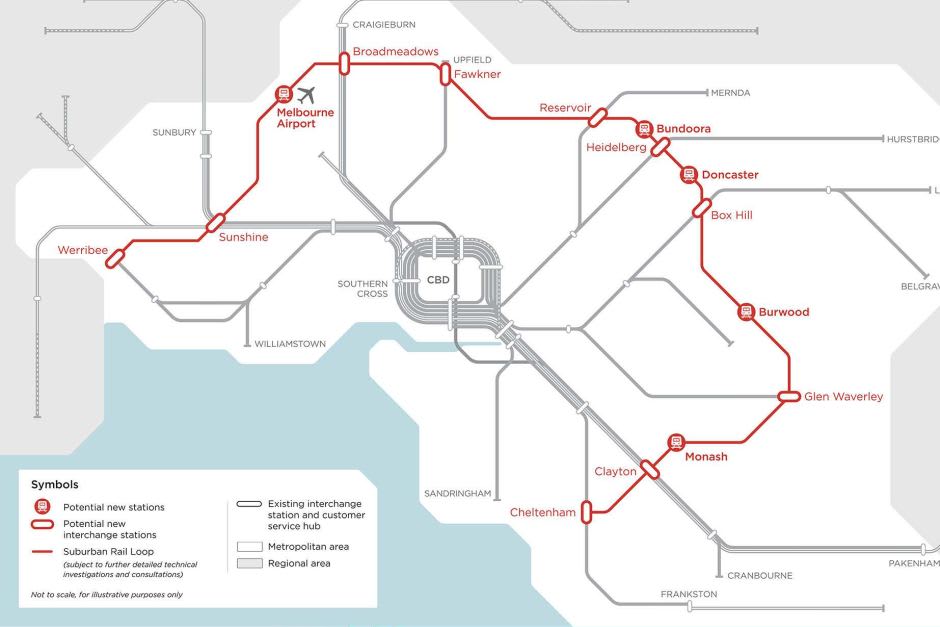Victorian Government unveils Suburban Rail Loop election proposal
The Premier last night, through his facebook page, gave a media alert of sorts for a big announcement to happen at 7am this morning and sure enough it was right.
For so long orbital connections in Melbourne have been all about freeways - take the North East Link, it's the final piece of our primary rail network - and now the ALP Government is taking an orbital rail network to the November state election.
All rail lines, except Alamein & Sandringham, will have a connection to the new underground line and all middle and National Employment and Innovation Clusters will be linked. The only clusters not directly serviced by this line would be Parkville, Fishermans Bend and Dandenong South.
The Government asserts 400,000 passengers will use the line every day and over 20,000 jobs will be created during what one can only presume will be a very long construction phase.
And the pricetag? A cool $50 billion.
At a press conference held subsequently after we first published the Premier and Public Transport Minister outlined other project parameters:
- The project will be built in phases with the first to be the Cheltenham to Box Hill section. The Premier also mentioned that the North West section (between the Airport and Sunshine) is already underway in the form of the Melbourne Airport Rail Link.
- The Premier said the Cheltenham to Melbourne Airport section will be entirely underground, that's over a whopping 50 kilometres.
- If the Andrews Government has been re-elected, the detailed planning and geotech work will begin early next year as part of the $300 million to be allocated toward planning.
- The Premier also said the project, championed by Jacinta Allan, has seen internal department work on the concept for over 12 months.
Comment & analysis
Given the volume of money to be set aside for planning - $300 million - the project appears to have progressed far beyond just a concept internally. That is the kind of money you'd expect to be spent for a major project such as this to progress to construction.
Other media are reporting 12 stations as stated in video published by the Premier at 7am this morning however any Melburnian will know there are huge areas - especially in the west - that if 12 stations was the total would go unserved. One suspects more stations will be announced should the government be re-elected and the planning work kicks off in earnest (that's what business cases are for).
Likewise, there's a big question on the type of trains to be used. At 400,000 passengers per day once complete as the government has claimed - which would make it the most heavily patronised rail lines in the city if not the country - the trains will presumably be 'heavy' but will the project be built to the same rail specifications as the rest of the network or will this be a chance to do what the NSW government has done and introduce a new operationally independent rail service utilising driverless trains?
$50 billion is eye-watering and paying for it will be interesting - less so if construction of the entire line is phase and scheduled to be complete over a longer period of time - however we need only look at the work Infrastructure Victoria is and has been doing on value capture.
The Monash NEIC, Deakin University in Burwood, Box Hill, La Trobe NEIC, Melbourne Airport, Sunshine NEIC and Werribee NEIC are all in the path of this new rail line and as we've reported on time and time again on Apartments.com.au are all centres that are already seeing significant residential or commercial development. Throw in other established job precincts at Heatherton between Cheltenham and Clayton, Glen Waverley itself, Broadmeadows and it's not hard to see how the line could get people out of cars and on to PT.
